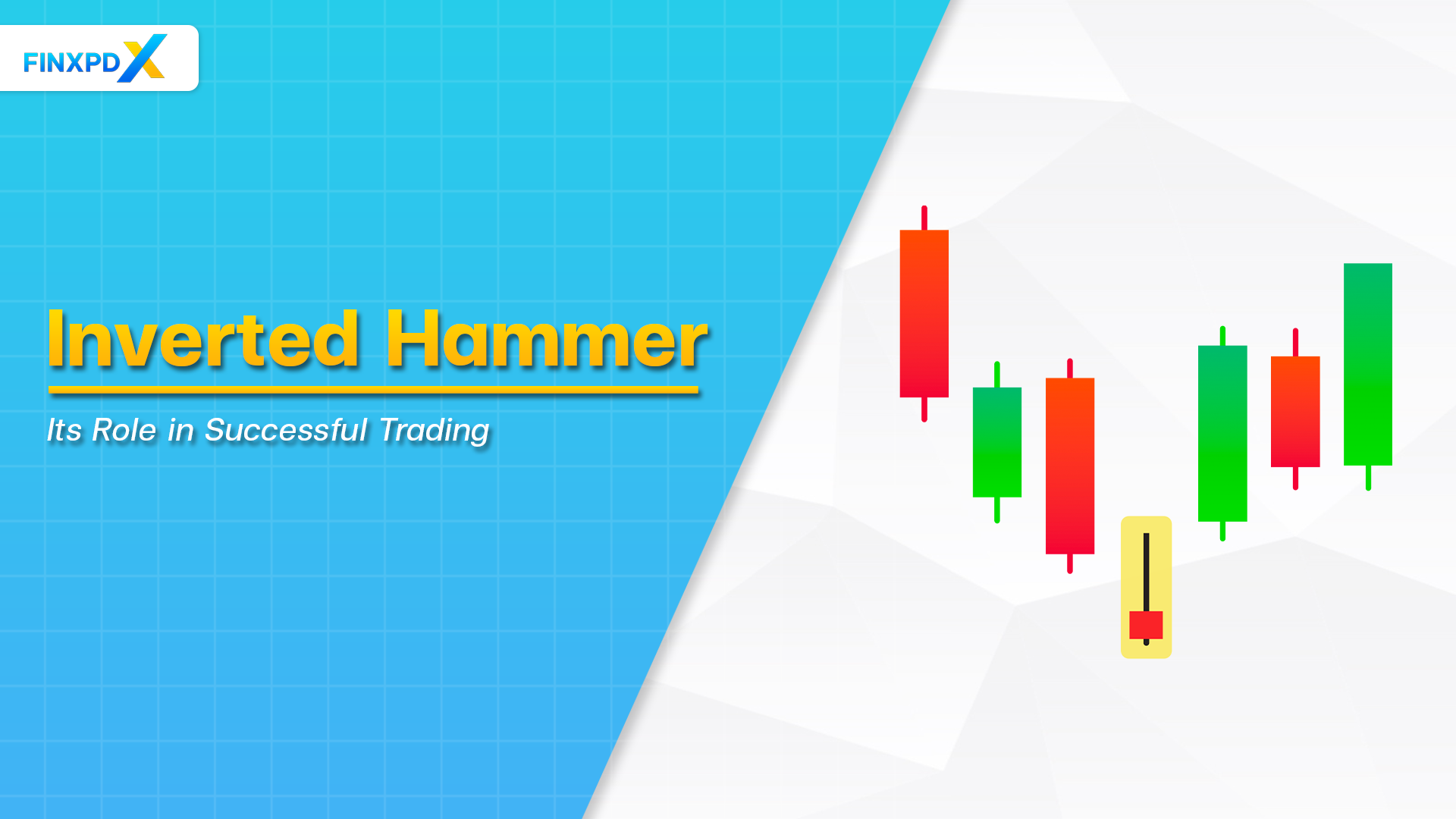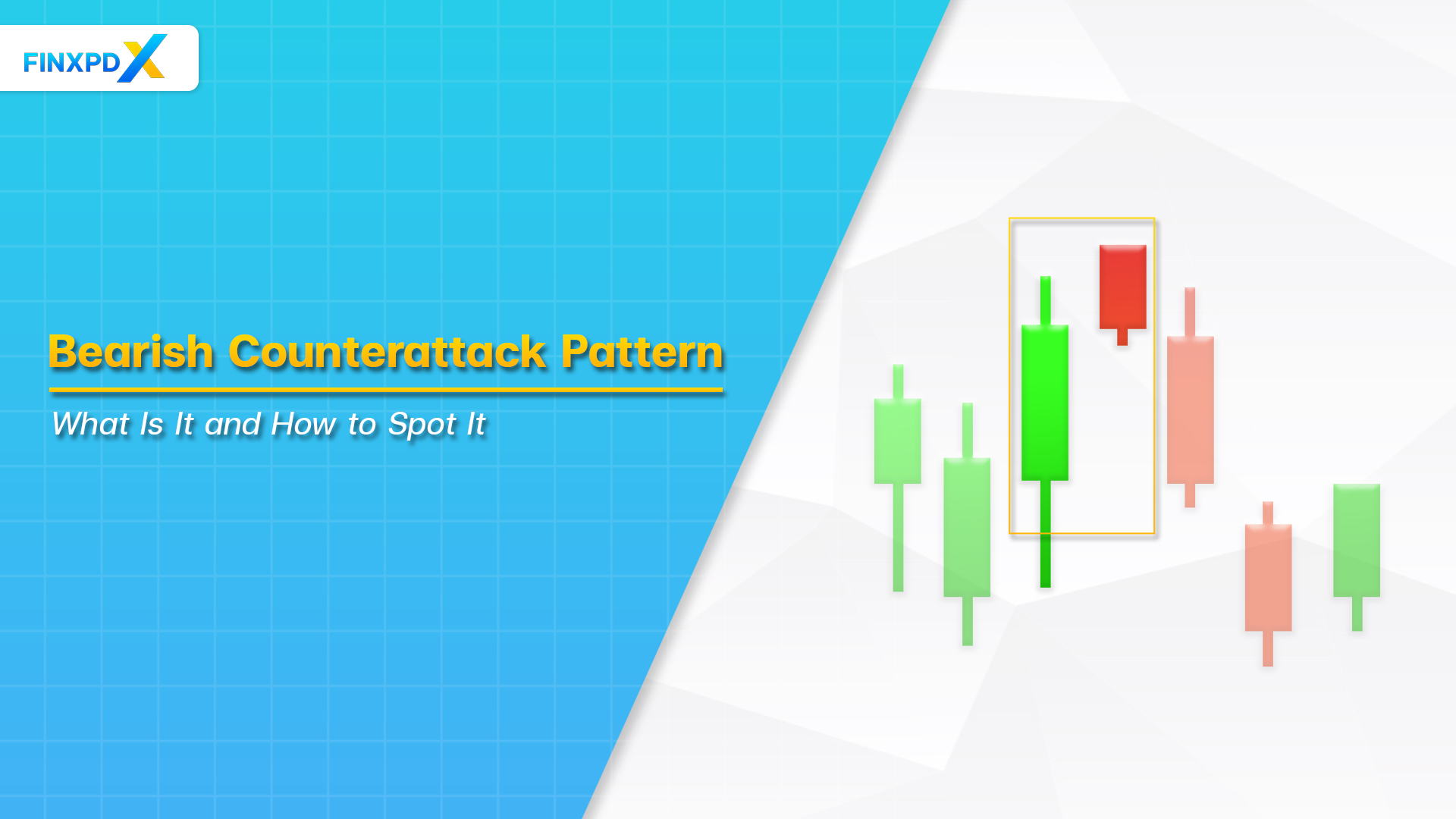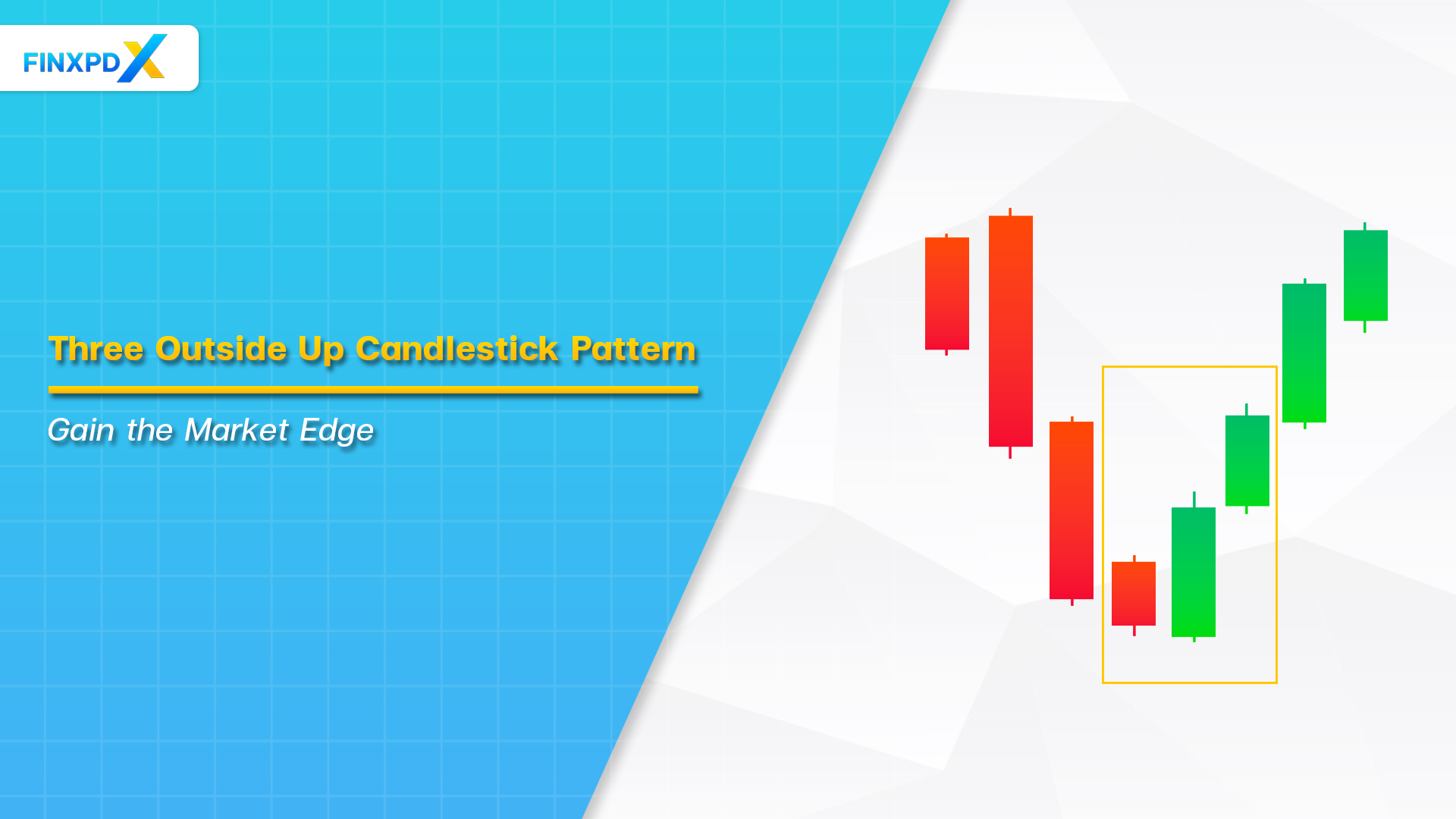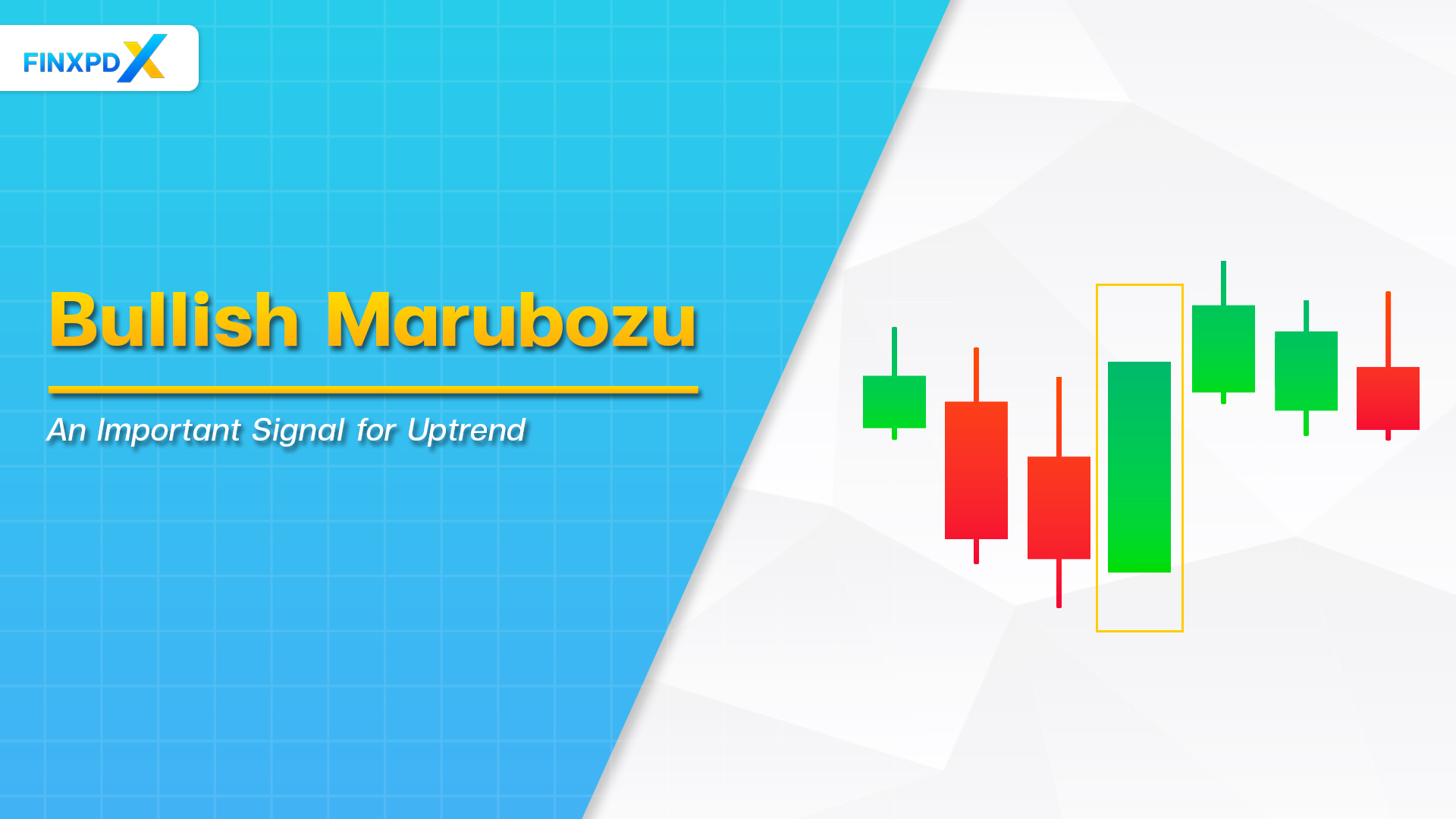There are many patterns that traders use to guess what will happen next in the market. One of these patterns is called the inverted hammer. They are a sign that tells traders a price might start to increase after falling for a while. This pattern can help traders make decisions more effectively.
In this guide, we’ll explain what an inverted hammer is, the structure of it, why it is important, and how traders use it to make decisions.
What Is the Inverted Hammer Pattern?
The Inverted Hammer pattern is a famous candlestick formation used by traders in technical analysis to identify potential reversals in stock’s price trend and forex’s price chart. The name originates from its distinct shape, which resembles an upside-down hammer. This formation occurs at the end of a downtrend and signals a possible shift to an uptrend.
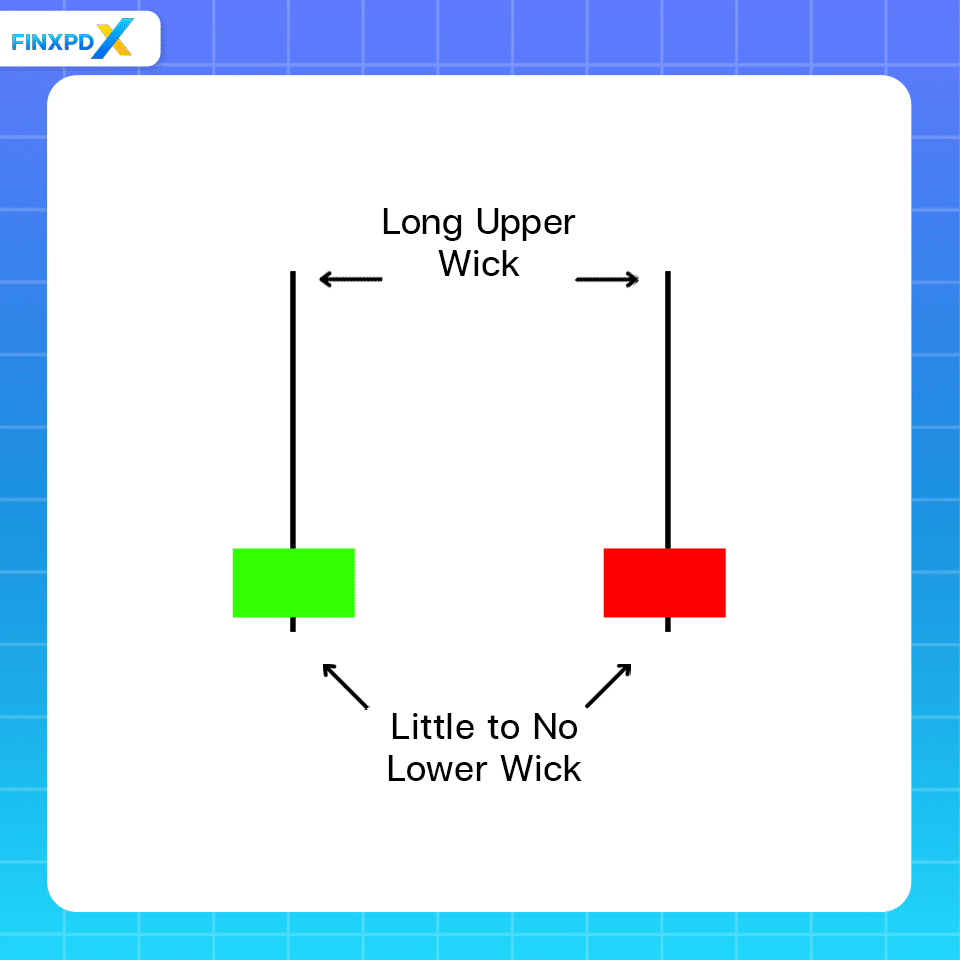
The candlestick has a small body and a long upper wick, with little to no lower wick, indicating that buyers attempted to push the price higher but were met with selling pressure.
Key Takeaways
- The inverted hammer pattern is a candlestick formation signaling a potential reversal from a downtrend to an uptrend.
- The pattern reflects a battle between buyers and sellers, indicating a shift in market sentiment and rising interest in buying.
- The inverted hammer pattern is characterized by a small body, long upper wick, and little to no lower wick.
- Both the hammer and the inverted hammer are reversal indicators. Their effectiveness in predicting trends depends on the subsequent market actions and trading volume.
Significance of the Inverted Hammer Pattern
The inverted hammer pattern is more than just a pattern on a forex chart; it carries a deeper meaning in the world of trading. Here’s the reason why it’s significant:
1. Battle Between Buyers and Sellers
When this pattern appears, it shows a moment when buyers try to push the price higher. However, sellers resisted. The long line (or “wick”) above the rectangle (or “body”) tells us that, even though buyers made an effort, they couldn’t win the day.
2. Anticipation of Change
After a period of falling prices, the appearance of an inverted hammer candlestick can suggest that the downturn might be slowing down. It’s like seeing a light at the end of a tunnel for those hoping for the price to rise.
3. Rising Interest
Many traders keep an eye out for the inverted hammer. When they spot it, it can lead to increased buying. This might actually push the price up.
4. The Importance of Confirmation
While this pattern is significant, wise traders look for other signs. They aim to confirm that a price is really about to rise. For example, they might wait for another positive day or check other patterns and indicators.
5. A Tool for Decision Making
By understanding its significance, traders can make more informed choices. They can decide when to buy or sell, using the pattern as a helpful hint in their decision-making process.
How to Identify the Inverted Hammer Pattern
Spotting the inverted hammer pattern in a forex chart isn’t hard if you know what to look for. Here’s a step-by-step guide to help you identify it:
1. Look for a Downtrend
Begin by finding a currency that has been on a downward trend. The inverted hammer pattern often appears after a series of declining prices, hinting at a potential change in the direction.
2. Observe the Shape
Inspect the candlestick for a shape resembling an upside-down hammer. This entails a small body at the bottom and a long upper shadow, with the shadow being about twice the length of the body or more.
3. Search for the Absence of Lower Shadow
Ensure the candlestick either lacks a lower shadow or has just a very short one. This highlights that the lowest trading price of the day is near the opening or closing price.
4. Check the Color
Distinguish whether the body of the inverted hammer is red (indicating the closing price was lower than the opening price) or green (the closing price was higher). A green body often suggests a more potent bullish reversal cue.
5. Volume Matters
Assess the day’s trading volume. If there is a significant increase in trading volume on the day the pattern appears, it can make the signal more reliable. This indicates a strong interest in the asset and a potential change in market momentum.
How to Trade With the Inverted Hammer Pattern
Trading based on the inverted hammer pattern involves more than just recognizing the pattern. You must also integrate other technical indicators and strategies to increase the likelihood of successful trades. Here’s a guideline on how to approach it:
1. Confirm the Signal
Wait for a confirmation candle following the inverted hammer candlestick. This could be a green candlestick that closes above the inverted hammer’s close. It indicates buying pressure and potential price reversal.
2. Set Stop Losses
Establish a stop-loss just below the low of the inverted hammer. This strategy helps you minimize potential losses if the expected bullish reversal doesn’t occur.
3. Consider Volume
Prioritize scenarios where the inverted hammer is accompanied by above-average volume. A high trading volume reinforces the reliability of the pattern and suggests a significant shift in market sentiment.
4. Incorporate Other Indicators
Use other technical indicators to validate your observations. Indicators like the RSI (Relative Strength Index), MACD (Moving Average Convergence Divergence), and moving averages can provide additional insights into market conditions.
5. Monitor Support and Resistance Levels
Keep an eye on critical support and resistance levels. The inverted hammer’s effectiveness is enhanced when it appears near these significant price levels, signaling a potential breakout or breakdown.
6. Stay Updated
Stay informed about the broader market conditions and news that might impact your chosen currency. External factors can influence the validity of the inverted hammer candlestick and alter the anticipated price direction.
7. Practice with Paper Trading
Consider practicing your strategy with paper trading. It allows you to test your understanding and refine your approach without risking real money.
Inverted hammer pattern is just one of 35 candlestick patterns invented in the trading world which are commonly used during trading sessions to help traders succeed.
Click the button below to download the PDF
Pros and Cons of the Inverted Hammer Pattern
When employing the inverted hammer in your trading strategy, it’s crucial to understand both its advantages and limitations. Below is a breakdown of the pros and cons of this candlestick pattern:
Pros
1. Bullish Reversal Indication
When spotted after a downtrend, this pattern often signals a potential bullish trend reversal. This can provide traders with an early entry into a new upward movement.
2. Easy Identification
The distinctive shape of this pattern, with a small body and long upper wick, makes it relatively easy to spot on a chart.
3. Volume Reinforcement
When the inverted hammer is accompanied by high trading volume, it strengthens the credibility of the bullish reversal signal.
⚠️Tip: Traders should always check the volume to support the pattern’s validity. Higher volume during the formation indicates stronger potential for reversal.
4. Flexibility With Other Indicators
It can be used in conjunction with other technical analysis tools and indicators, such as RSI, MACD, or moving averages, to confirm signals and reduce false positives.
5. Clear Stop-Loss Points
The low of the inverted hammer provides a natural level to place a stop-loss order, helping traders manage potential losses.
Cons
1. Not Always Accurate
Like all technical analysis patterns, the inverted hammer candlestick doesn’t guarantee a trend reversal. There can be false signals, leading to potential losses.
2. Requires Confirmation
To increase accuracy, the pattern requires confirmation from subsequent candles, which means traders might not always get the optimal entry point.
3. Dependent on Context
The inverted hammer’s reliability increases when it appears after a clear downtrend. If found in a ranging or consolidating market, its significance can diminish.
4. Potential for Over-Reliance
Traders might be tempted to rely solely on this pattern, neglecting other significant factors in the market. It’s always best to use this as part of a broader trading strategy.
5. Subjectivity in Identification
While the pattern is distinctive, there can be slight variations. Traders might disagree on whether a specific candle is a perfect inverted hammer candlestick or not.
Conclusion
In the vast landscape of trading tools, the inverted hammer stands out as a powerful signal for bullish reversals. Characterized by its distinct shape, it provides traders with a hint of potential upward momentum. However, its true strength shines when combined with other market indicators and when traders ensure proper market confirmation.
As with any tool in the trading realm, the inverted hammer’s effectiveness depends not just on its inherent properties, but on the trader’s experience, strategy, and the broader market context. It’s a valuable asset for those looking to navigate the complexities of market trends.
FAQs
The inverted hammer is a technical analysis candlestick pattern that suggests a possible bullish reversal after a declining trend.
Look for a single candle with a tiny body at its lower end and a lengthy upper shadow. This should appear after a noticeable downtrend.
Yes, it typically indicates potential upward momentum. It suggests that buyers managed to push prices up by the end of the session.
Both are bullish reversal patterns. The hammer forms after a downtrend, just like the inverted hammer candlestick. Neither is universally stronger; their relevance depends on the market context and other confirming signals.
For potential buyers, it’s a positive sign, but for those in short positions, it might be a warning. Using it with other tools and analysis methods is always wise.
Related Articles:
- Balance of Trade: Its Impact in Global Markets
- Forex Factory: Ultimate Resource for Traders
- Forex Gods: The Secrets of Top-Level Traders
- Forex Trading in India: Centre of Opportunities
Read more: Forex

